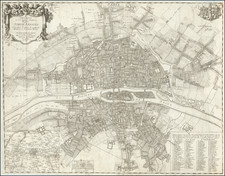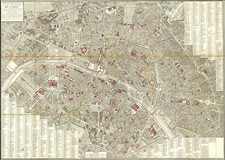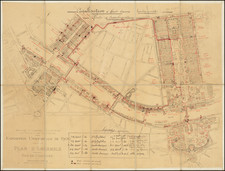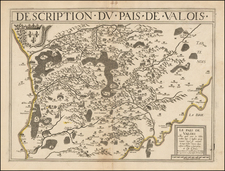Interesting plan of Paris, focused on the City's fortifications in the middle of the 19th Century.
The author makes a meticulous study of the range of fire based upon the mortar range of approximately 15 positions and concludes that there is only one strip of land around Paris which could not be reached by mortar fire. Ironically, the area around Colombes forms a relatively straight line between Paris and London.
Ironically, the map was issued shortly after the London Straits Convention, during the so-called Entente Cordiale between Britain and France, which lasted until the rise of Louis-Napoleon Bonaparte in 1848.
The map provides an elaborate template of mortar fire range, superimposed over a plan of Paris, which focuses on its fortified walls, roads and major structures, military and civilian.
The map was published toward the end of the French July Monarchy, a liberal constitutional monarchy in France under Louis Philippe I, which lasted from July 1830, with the July Revolution of 1830, and ending in February 1848, with the Revolution of 1848. It marks the end of the Bourbon Restoration (1814–1830). It began with the overthrow of the conservative government of Charles X, the last king of the House of Bourbon.
Louis Philippe, a member of the more liberal Orléans branch of the House of Bourbon, proclaimed himself as Roi des Français ("King of the French") rather than "King of France", emphasizing the popular origins of his reign. The king promised to follow the juste milieu, or the middle-of-the-road, avoiding the extremes of both the conservative supporters of Charles X and radicals on the left.
The July Monarchy was dominated by wealthy bourgeoisie and numerous former Napoleonic officials. It followed conservative policies, especially under the influence (1840–48) of François Guizot. The king promoted friendship with the United Kingdom and sponsored colonial expansion, notably the French conquest of Algeria. By 1848, a year in which many European states had a revolution, the king's popularity had collapsed, and he was overthrown.









![(Parishes of Paris) Plan des Paroisses de Paris Avec la Distinction des Parties Eparses qui en Dependent Dresse par Ordre. . . [in 4 sheets]](https://storage.googleapis.com/raremaps/img/small/78579.jpg)




![[ Paris ] Plan Routier De La Ville et Faubourg De Paris 1772](https://storage.googleapis.com/raremaps/img/small/92313.jpg)